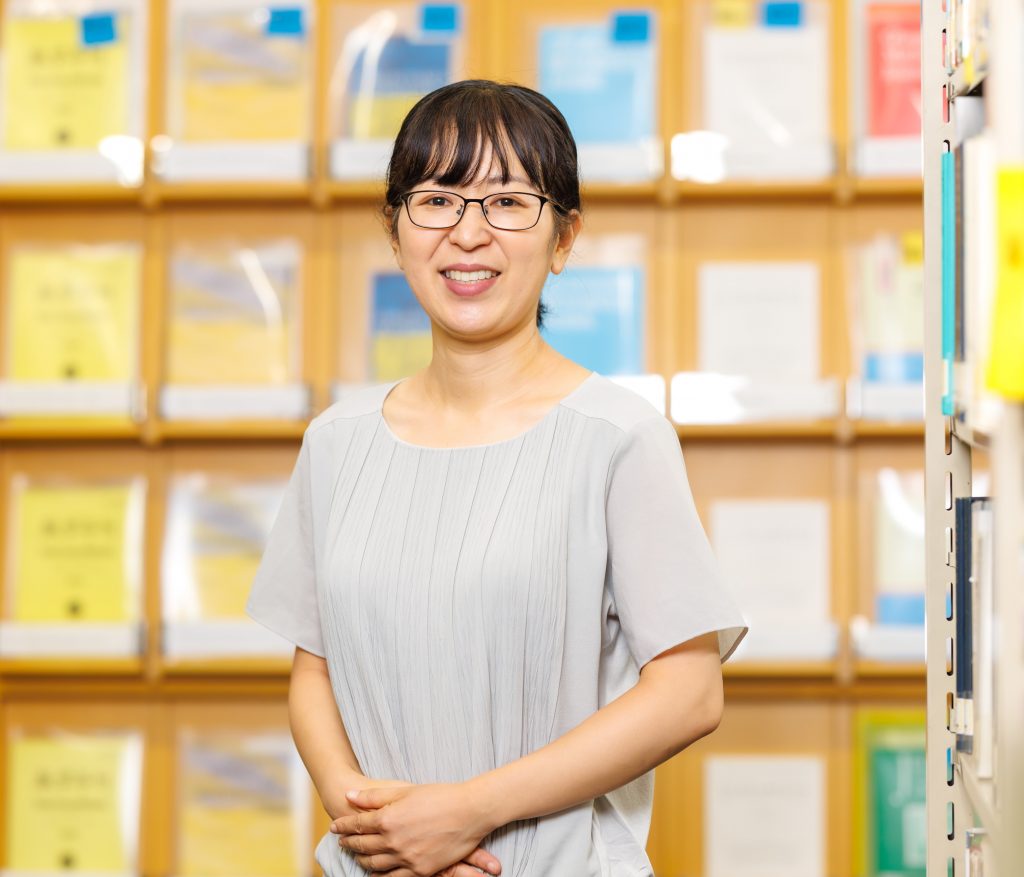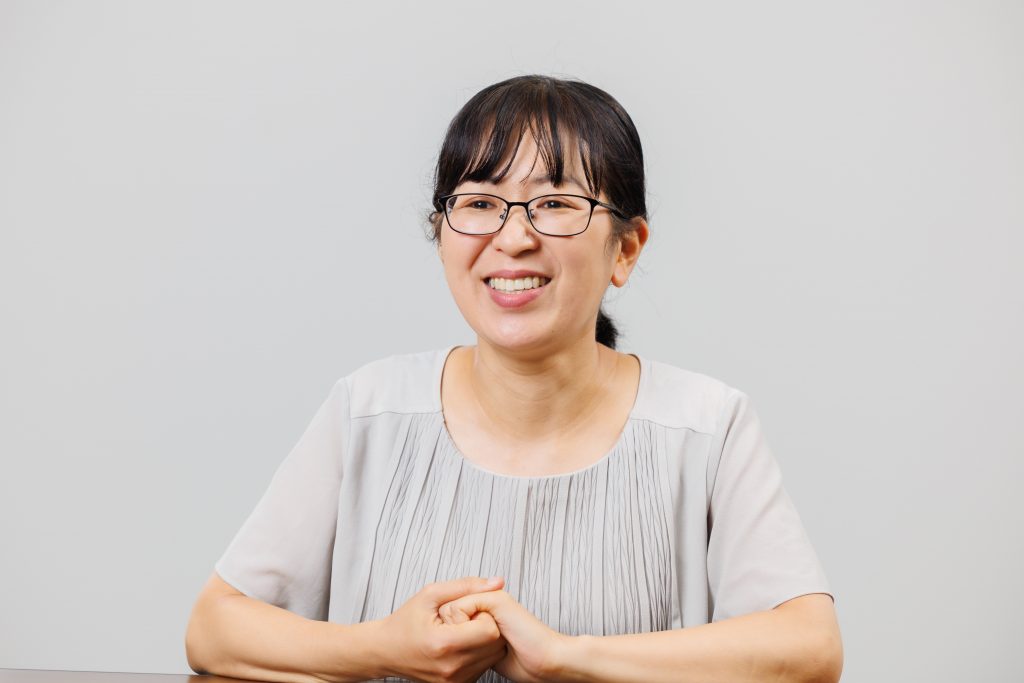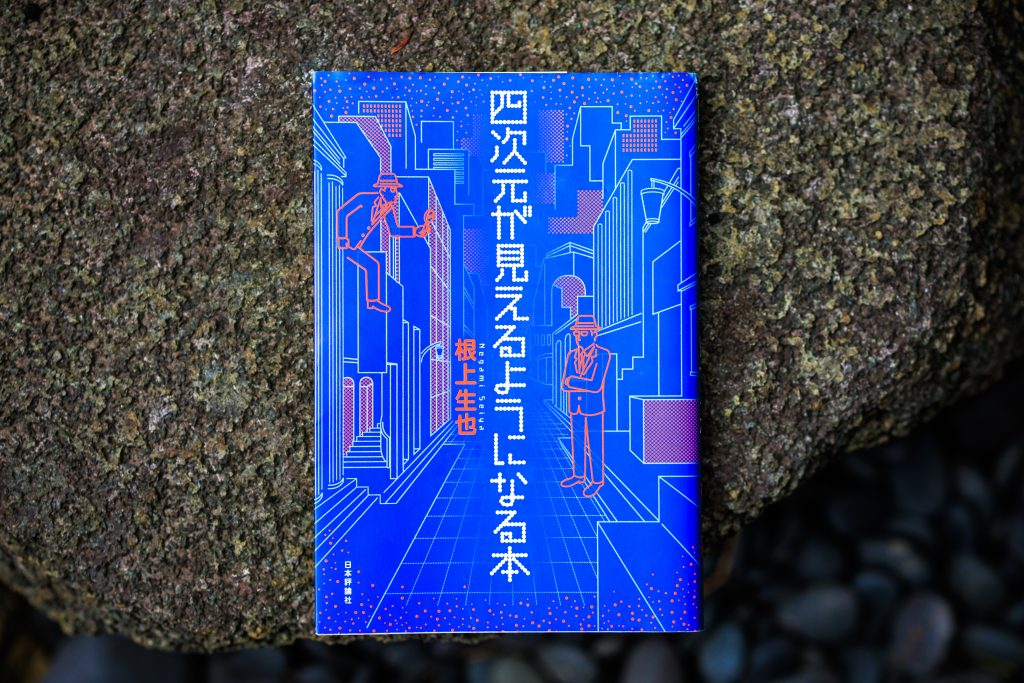
We are all familiar with knots, whether from shoelaces or tying something else. Today, however, knots also form a competitive research theme pursued by mathematicians around the world. Associate professor Kanako Oshiro from the Faculty of Science and Technology is one such researcher.
Knot theory is a field of study called topology. Topology is a branch of geometry that deals with shapes which can be continuously deformed and still be considered the same thing. For example, in the game cat’s cradle, the closed string continuously deforms in three-dimensional space to create various shapes. The shapes formed may look different to the eye, but since they are created by simply deforming the same string, topologically, they are considered the same.
However, there are some rules for deformations in topology. For example, when deforming the shape, it must not be cut or glued—in other words, the way the object is connected must not be changed. In addition, when discussing entanglement of closed strings like in the cat’s cradle example, the string must be moved in a three-dimensional space.
Railway route maps make good effect of these topology rules. The shape on route maps displayed at ticket counters in train stations are totally different from the actual railroads. However, you can find the shortest route to your destination by looking at the map. This is because route maps are drawn based on topology; in other words, they are connected in the same way as the actual railroads.
Algebra applications for difficult to prove overlap

To prove that two knots are the same, you move the two knots in various ways. If they eventually form the same shape, it is proven that they are the same. The problem is when they do not overlap no matter what you do: proof is then needed to show this, that is, to conclude that they are in fact different knots.
This is actually an extremely difficult problem in general, and some kind of mathematical proof is required. Although knots fall under geometry, when proving, we sometimes replace geometry with algebra. At such times, we use quandles, which are based on axioms derived from the properties of knots and were developed in 1982 for use in knot theory.
Knot theory itself is a new research area that started in the 19th century and fully developed after entering the 20th century. With the progress in research, it is also expected to have all kinds of potential applications in society.
For example, in the field of life science, there are discoveries of protists with ring-shaped DNA. Ring-shaped DNA has the structure of knots, and introducing enzymes that replace genes to this DNA changes the knot structure. The effect of enzymes can be confirmed by looking at this change. As in this example, knot theory is expected to have useful applications outside of mathematics.
Drawing by hand, using computers, and even learning through games
When conducting research on knots, there are times when I actually draw many diagrams and study the differences, and make calculations using difficult equations. I also use computers when carrying out complicated calculations.
On the other hand, you can also find fun in knots. I am referring to the “Region Select” game created using knot theory. This game has been made available on the internet. You click on the regions of the figure, and the game ends when you light up all of the crossings. There is no need to understand baffling knot theory to enjoy this game. Rather, it is a game that tests your intuition and imagination, and it may be interesting to come up with your own strategy. I hope people can get to know the world of knots through this game.
Mathematics in university offers a totally different world from mathematics up till high school. Even if you were bad at mathematics in high school, there is a high possibility that you will find this new world of mathematics interesting. I really hope you will enjoy this unknown realm.
The book I recommend
“Yojigen ga Mieru Yoni Naru Hon”(Book That Allows You to See the Fourth Dimension)
by Seiya Negami, Nippon Hyoron Sha

We usually see the world in three dimensions. If we expand the world into four dimensions, amazing phenomena start to occur. Knots that cannot be untied in the three-dimensional space can all be unraveled in the four-dimensional space. This is a book that leads you into such a new world.
-
Kanako Oshiro
- Associate Professor
Department of Information and Communication Sciences
Faculty of Science and Technology
- Associate Professor
-
Graduated from the Department of Mathematics, School of Science, Hiroshima University, and received her Ph.D. in Science after completing the doctoral program in Mathematics at the university’s Graduate School of Science. Took on several positions—such as research fellow (DC1 and PD) at Japan Society for the Promotion of Science, assistant professor at the Department of Mathematical and Physical Sciences, Faculty of Science, Japan Women’s University, and assistant professor at the Department of Information and Communication Sciences, Faculty of Science and Technology, Sophia University—before assuming her current position in 2018.
- Department of Information and Communication Sciences
Interviewed: July 2024